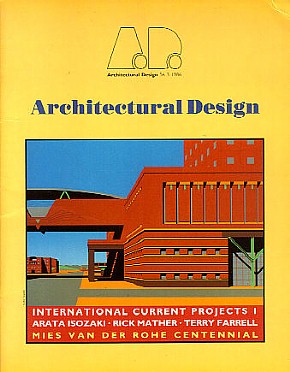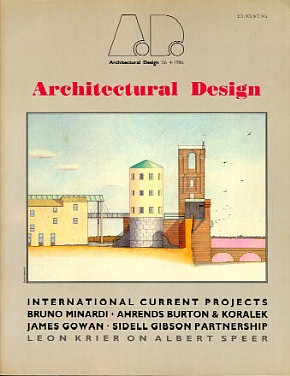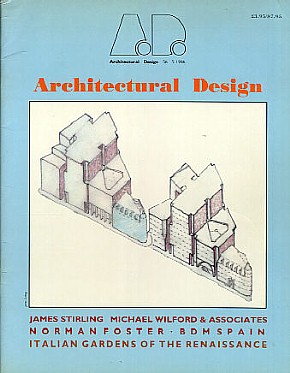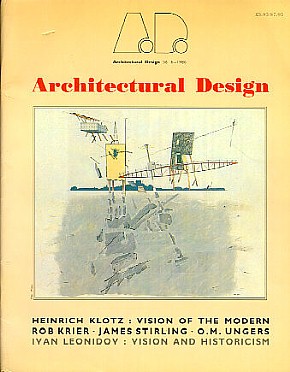Alan Hess, The Origins of McDonald's Golden Arches (Journal of the Society of Architectural Historians, March 1986).
Pierre de la Ruffinière du Prey on, Sir John Soane, Architect (Journal of the Society of Architectural Historians, March 1986).
Paul F. Norton on, The Correspondence and Miscellaneous papers of Benjamin Henry Latrobe (Journal of the Society of Architectural Historians, June 1986).
August E. Sarnitz, Proportion and Beauty--the Lovell Beach House by Rudolph Michael Schindler, Newport Beach, 1922-1926 (Journal of the Society of Architectural Historians, December 1986).
Christian Goedicke, Klaus Slusallek and Martin Kubelik, Thermoluminescence Dating in Architectural History: the Chronology of Palladio's Villa Rotunda (Journal of the Society of Architectural Historians, December 1986).
Mary Taliaferro Boatwright on, Hadrien et l'architecture romaine (Journal of the Society of Architectural Historians, December 1986).
Alberto Pérez-Gómez on, J.N.L. Durand 1760-1834, De l'imitation à la norme (Journal of the Society of Architectural Historians, December 1986).
Franklin Toker on, Biographical Dictionary of Philadelphia Architects: 1700-1930 (Journal of the Society of Architectural Historians, December 1986).
David M. Sokol on, Latrobe's View of America, 1975-1820: Selections from the Watercolors and Sketches (Journal of the Society of Architectural Historians, December 1986).
| |

A.C. Papadakis, Architectural Design (London: Academy Editions, vol. 56 no. 3, 1986).
James Gowen:
Mies van der Rohe Centennial
Arata Isozaki:
Phoenix Government Center
Rick Mather:
New Building at U.E.A.
Terry Farrell:
Royal Opera House Extension
| |

A.C. Papadakis, Architectural Design (London: Academy Editions, vol. 56 no. 4, 1986).
Ahrends Burton & Koralek:
Thames Centre Project
James Gowen:
House at Temple Hill, Hampstead
Bruno Minardi:
Restoration of Gatteo Castle
Sidell Gibson Partnership:
Grand Buildings, Trafalger Square
Leon Krier:
An Architecture of Desire
| |

A.C. Papadakis, Architectural Design (London: Academy Editions, vol. 56 no. 5, 1986).
Geoffrey Jellicoe:
Italian Gardens of the Renaissance
Briones Dalmau & marques:
Industrial conversion in Villarreal, spain
James Stirling, Michael Wilford & Associates:
No. 1 Poultry, London EC4
| |

A.C. Papadakis, Architectural Design (London: Academy Editions, vol. 56 no. 6, 1986).
O.M. Ungers:
The Janus Face of Architecture
Catherine Cooke:
Ivan Leonidov: Vision and Historicism
Heinrich Klotz:
Revision of the Modern -- Vision of the Modern
Rob Krier:
Freiburg Pavilion
James Stirling, Michael Wilford & Associates:
Tate in the North
|